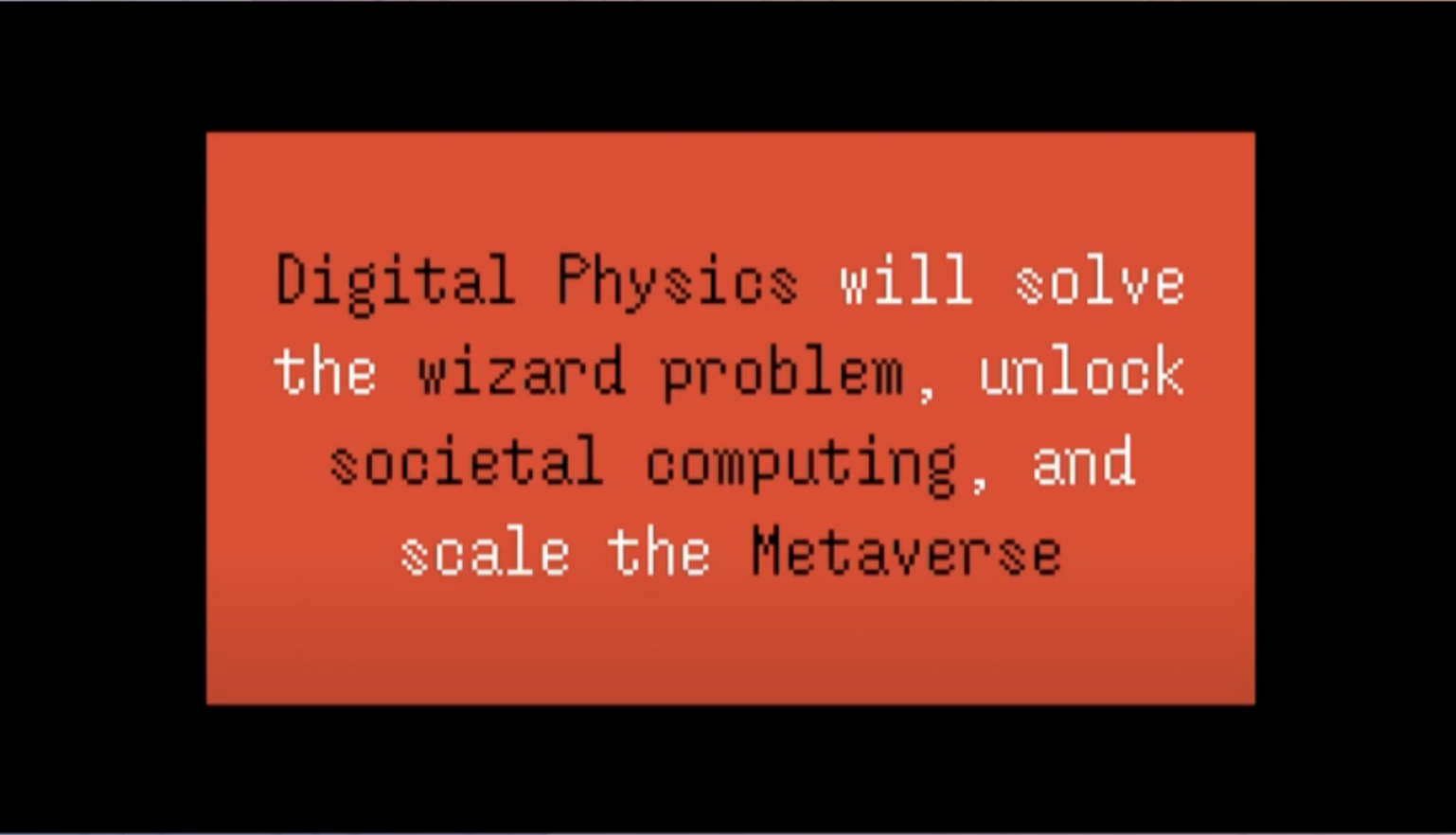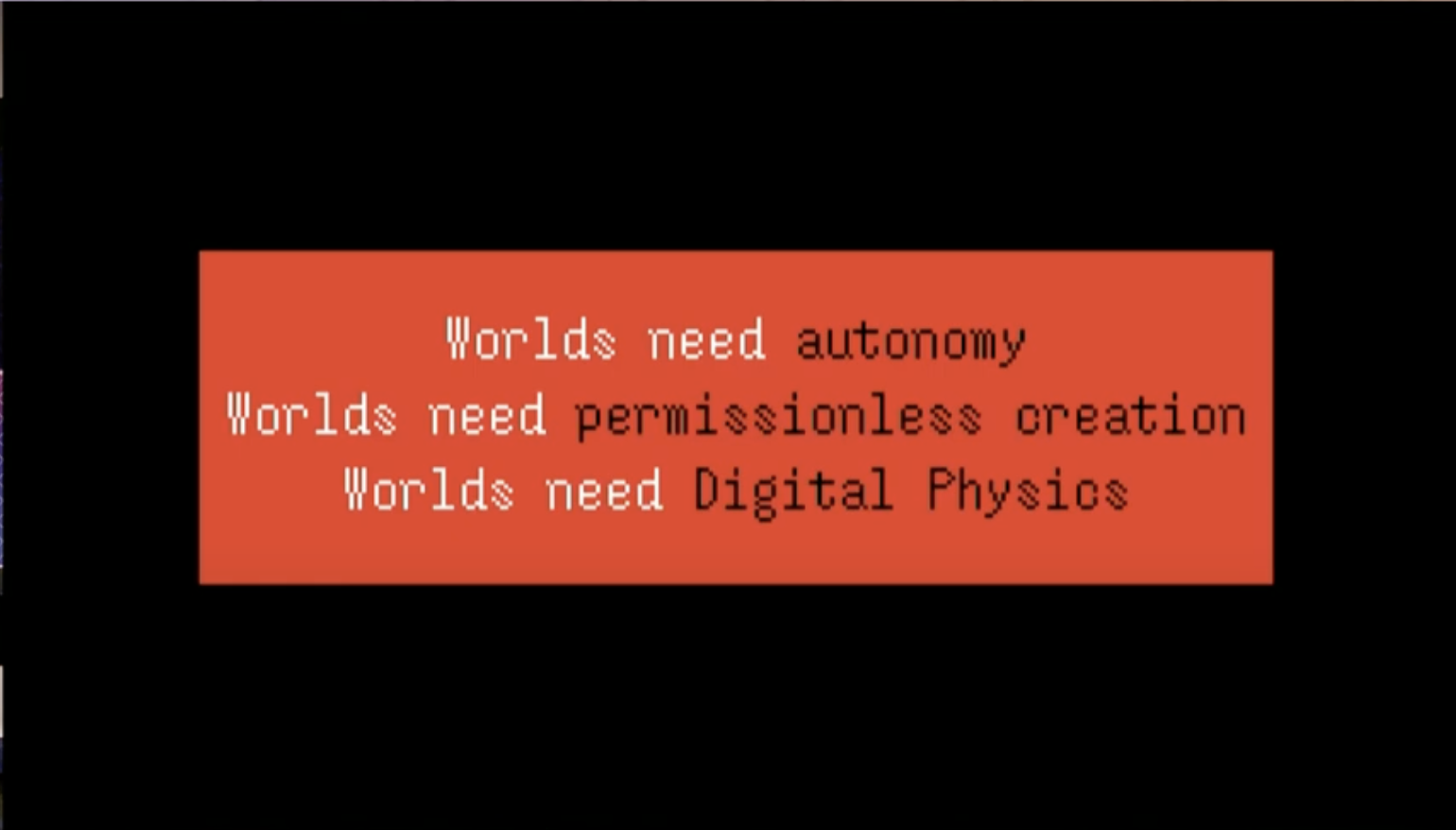Digital Physics
Digital physics are rules based on the tenets of physics enforced using smart contracts. Crafted correctly, they will result in virtual worlds with as much emergence as the internet and become an ever-present part of reality.
Smart Contracts
Physics are the only set of rules in our world that are an ever-present part of reality. Unlike human-constructed rules and systems, physics cannot be turned off, changed, opted out of, or argued against.
The internet is the closest analogy to an existing virtual system that is an ownerless, ever-present part of reality which cannot be turned off and is equally shared by everyone.
However, the internet can only do this for networking and nothing else.
While the internet has no owner and is equally shared by everyone, it relies on computers for all stateful programs.
Computers are mere extensions of their owners and are meant to be controlled by them. Hence, only a few are trusted enough to control programs that coordinate behavior of any significance. For example, the Bank of America can deploy a program on their computer, call it a bank, and be taken seriously, but Bob from his basement cannot.
If the internet itself were stateful and programmable, not depending on any individual computer, Bob could deploy a program from his basement, call it a bank, and have it treated as real money.
Smart contracts transform the internet from a mere data transmission network between computers into an autonomous, stateful, and programmable entity, not reliant on any specific computer or person in the network.
This fundamentally flips the relationship between people and our programs.
In our large scale coordination systems, programs are second-class citizens.
Programs aren't autonomous; they are ultimately subservient to those who control the computers they run on. Thus, people are the first-class citizens that control our coordination systems, with programs serving merely as tools which ease doing so.
Programs are granted autonomy when the internet itself becomes a stateful, programmable entity, not reliant on any specific computer or person in the network. As a result, programs become first-class citizens that can coordinate behavior at massive scales by themselves.
A wild-west, but telling, example is banking versus bitcoin. If you pass away or forget your banking password, the bank can recover your funds by overriding the program. In contrast, Bitcoin is an autonomous program that nobody can override. Losing your private key means losing your funds.
In doing so, they unlock the possibility for anyone to create programs which grant human-defined rules the properties of physics: ownerless, ever-present parts of reality coordinating behavior at massive scale.
Tenets of Physics
Existing virtual worlds, defined with arbitrary high-level game rules, often contradict the tenets of physics: space, locality, causality, and conservation laws.
However, we see a gain in emergence as we go closer to the tenets of physics.
Transitioning from traditional game design (opens in a new tab) to systems with strong tenets of physics means resources are objects occupying space and requiring physical movement. High-level game inventories that allow arbitrary storage and access without occupying physical space are not possible. This increases emergence, as players must coordinate to build and manage storage, transport, and defense systems to protect and allocate resources.
Transitioning from traditional game design (opens in a new tab) to systems with strong tenets of physics also changes the concept of private property. In these systems, social constructs like land ownership can't actually prevent that space from being manipulated by other objects. This leads to the emergence of players forming “militaries” to protect their social constructs.
Since the primary purpose of creating ownerless, ever-present virtual systems like the internet is to maximize emergence over an indefinitely long period of time, it's crucial that we transition from traditional game design towards systems with strong tenets of physics.
Existing virtual worlds have shallow physics systems and rely on hardcoded, specific rules for each player interaction with the environment.
However, we see a gain in expressiveness as we increase the depth of our physics system.
Qualitative difference between a physics in which a car moves because the model’s location in space is directly updated by the game engine, versus one in which it moves because the wheels impart a force on the road, versus one in which chemical reactions propagate force down a cam shaft to a transmission which in turn imparts force onto the axle, then the wheel, then the material of the road surface, and the car is propelled forward via second law reaction. We can see the gain in expressiveness as the level of the “physics” is moved down.
Worlds with shallow physics will result in players exhausting all the directly prescribed interactions over time and unable to create new things, clashing with the intended long-term ever-presence of smart contracts.
By moving closer to the tenets of physics, we will unlock virtual worlds where stories can continue to emerge and creativity can continue to be expressed over an indefinitely long period of time.

